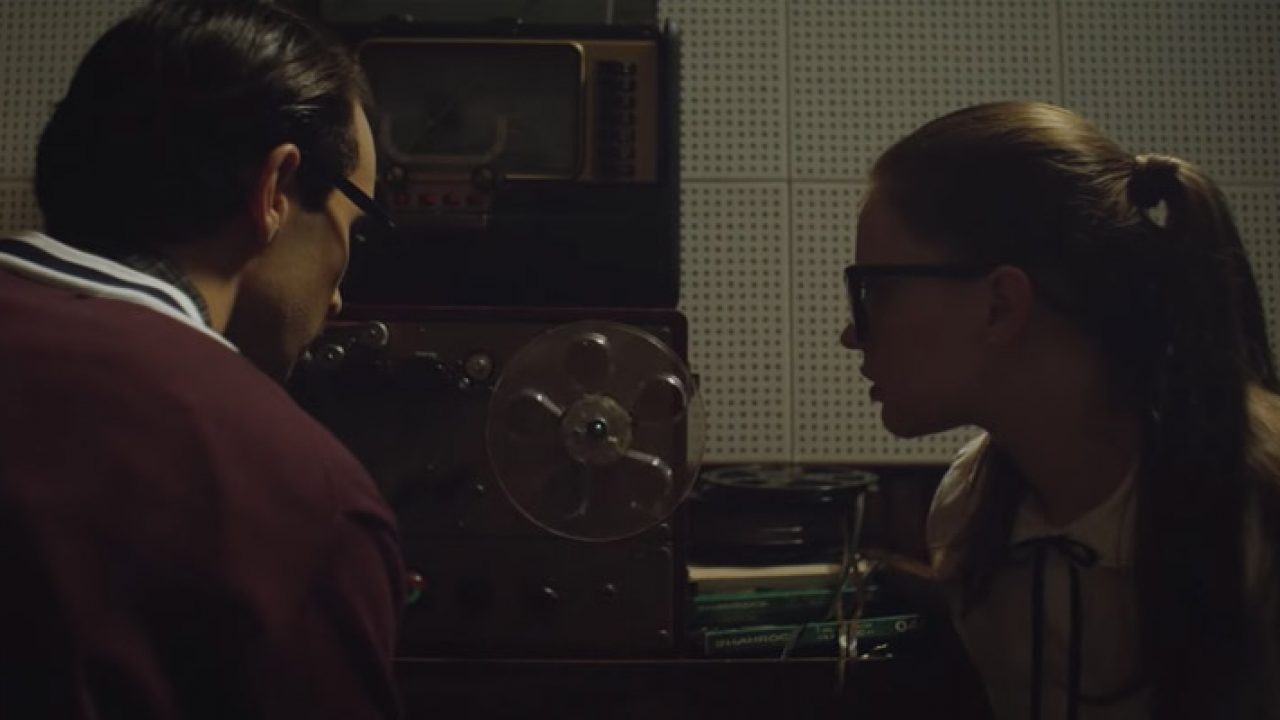When people think of a science fiction movie, they’ll be quick to mention special effects, aliens, and crazy new worlds they saw. But when people talk about GREAT sci fi? That’s where they’ll mention a killer story backing up all the eye candy: Invasion of the Body Snatchers or Minority Report, for example. The Vast of Night’s creative team takes this to heart, using their tiny budget to craft a suspenseful, engaging story that lingers much longer than an empty dazzle of special effects.
Like many great sci-fi stories, this one begins in a small town: Cayuga New Mexico. Local teen fixit and DJ Everett (Jake Horowitz), has to settle for a gig during the Friday night basketball game, knowing somewhere between 0 and 3 persons are listening to him. One of those people is Fay (Sierra McCormick), an aspiring tween scientist obsessed with technology of the time like tape recorders or phone switching. During her phone switching gig, Fay encounters a repeating sound that keeps cutting off cryptic, sometimes frantic calls. With nowhere to turn, she tells Everett, who broadcasts the sound live on air, bored and hoping something will happen. And then the phone rings…
Pacing goes a long way to helping The Vast of Night capture the audience’s attention. The first 30 minutes or so follow Everett and Fay as they go about their normal Friday night in Cayuga…and just how small the town is, as we walk from the school to gym to Fay’s house in what seems like real time. Director Andrew Patterson establishes quickly both the rhythms of small town life, and life in 1950s New Mexico with this approach. Then after Fay connects with Everett over the phone we zip around town much more quickly and unnaturally, preparing us for the conversations and dialogue to come in the second half of the film, which take the story in a stranger, more interesting direction. To keep up, characters in the movie start moving faster too, either running, or getting a car, as the situation demands a more propulsive effort from everyone involved, helping maintain audience attention as The Vast of Night propels to its conclusion.
To honor its time period, writers Andrew Patterson and Craig W. Sanger adapt writing styles to fit the period in question, the 1950s. What does that mean? Well, with TV in its infancy, a lot of entertainment came from radio broadcasting, and we get a lot of that here, with voices chatting and people (eg the audience and a character or two) reacting to the story being told. Normally, you’d want your characters to go out and discover what the hell is going on themselves (show, don’t tell, the main writing rule), but the writing here is so good, that you’re more interested in what everyone has to say than where they’re obviously sending the plot. This approach serves two purposes: it can keep the budget low by having a bunch of people just sitting and reacting to a great story, and maybe more importantly, it leaves a lot of what is being said vague enough to let viewers’ imaginations run wild, without having to reveal anything, straight out of the Jaws playbook. Writing like this amps up the suspense bit by bit, having you frantic and excited at Fay and Everett’s chance to discover something….unforgettable.
Like the great sci-fi of old, The Vast of Night goes back to the basics of the genre’s successes, delivering something timeless as a result. Few first features are as good as this one by Andrew Patterson. The last low budget sci-fi movie I loved as much as The Vast of Night was Safety Not Guaranteed, directed by the Jurassic World franchise helmer Colin Trevorrow. So if that’s any indication, congratulations Andrew Patterson on landing your Marvel franchise in 2-5 years! Well deserved.

